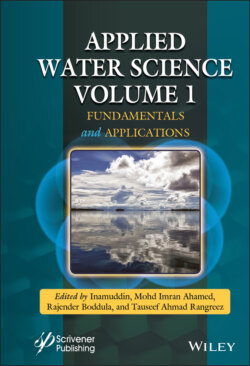Читать книгу Applied Water Science - Группа авторов - Страница 22
2
Occurrence, Human Health Risks, and Removal of Pharmaceuticals in Aqueous Systems: Current Knowledge and Future Perspectives
ОглавлениеWillis Gwenzi1,3*, Artwell Kanda2, Concilia Danha3, Norah Muisa-Zikali3 and Nhamo Chaukura4
1Biosystems and Environmental Engineering Research Group, Department of Soil Science and Agricultural Engineering, University of Zimbabwe, Mt. Pleasant, Harare, Zimbabwe
2Department of Environmental Science Bindura University of Science Education, Bindura, Zimbabwe
3Department of Environmental Science and Technology, Chinhoyi University of Technology, Chinhoyi, Zimbabwe
4Department of Physical and Earth Sciences, Sol Plaatje University, Kimberley, South Africa
Abstract
The occurrence of pharmaceuticals and their metabolites in aquatic systems is an emerging human health concern. The current chapter examined existing evidence to address the following objectives: (1) to summarize the nature, sources, and behaviour of pharmaceuticals detected in aquatic system; (2) to highlight human exposure pathways, potential health risks, and removal methods for pharmaceuticals; and (3) to identify knowledge gaps to guide future research. The major classes and sources of pharmaceuticals including, antibiotics, beta-blockers, analgesics, cancer therapeutics, anti-inflammatory drugs, lipid regulators, and endocrine disruptors are highlighted. The behaviour and fate of pharmaceutics in aquatic systems, including dissemination, sorption, biochemical degradation, phase partitioning and uptake and bioaccumulation by aquatic organisms are discussed. Human exposure occurs via ingestion of contaminated water and aquatic foods, inhalation and dermal contact. The emergence of antimicrobial resistance and its potential health effects is the most cited human health risk. However, barring the risk for antimicrobial resistance, the evidence linking pharmaceuticals to human health outcomes remain poor. Some studies even suggest that the human health risks attributable to human exposure to pharmaceuticals are negligible. However, there is need for caution as the human health risks may vary considerably on a case-by case basis. Specifically, the human health risks could be significant in Africa and other developing regions due to several risk factors. These include: (1) the high prevalence of consumption of raw drinking water and aquatic foods from polluted sources; (2) a putative high pharmaceutical pollution associated with intensive use of pharmaceuticals to control the high animal and human disease burden in the tropics; and (3) high abuse and misuse of pharmaceuticals caused by the existence of informal markets and weak and poorly enforced environmental, public health, and medicines regulations. The capacity of conventional and advanced water treatment processes to remove pharmaceutics in aqueous systems is discussed. Finally, future research directions were highlighted to address the lack of comprehensive data on the ecotoxicology, epidemiology, and behaviour and fate of pharmaceuticals in aquatic systems especially in the tropics.
Keywords: Aquatic pollution, behaviour, human exposure, human health risks, removal
